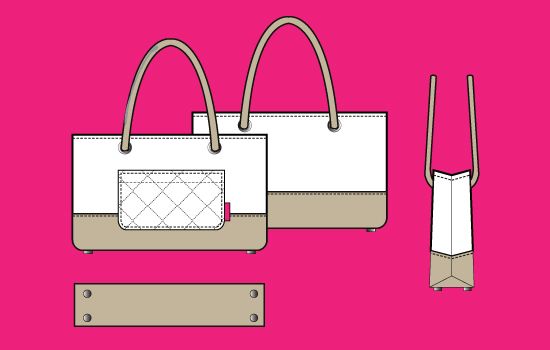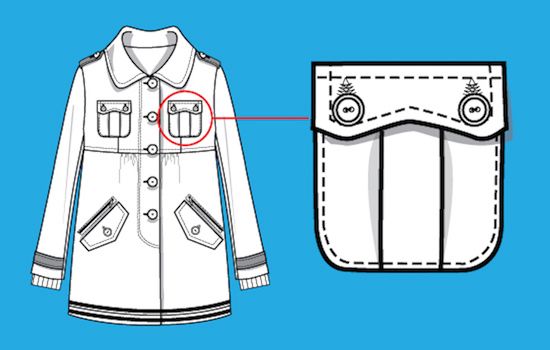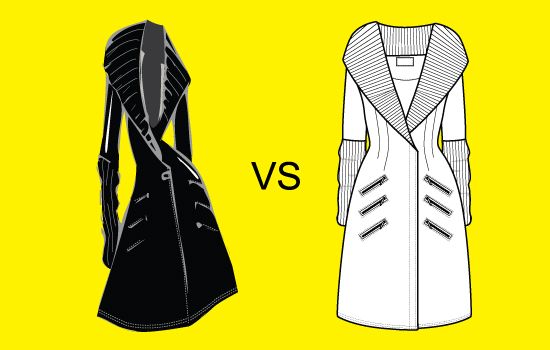.png)
Techpack Is Important
Why is a Tech Pack Important?
1. Saves Time and Money: A well-prepared Tech Pack reduces the likelihood of errors during sample production. By clearly outlining all design details, the manufacturer can produce samples that closely match the designer's original vision, minimizing the need for multiple revisions and saving both time and money.
2. Accurate Price Quotation: A detailed Tech Pack allows manufacturers to accurately estimate the time and resources required to produce the garment, leading to a precise cost quotation. This transparency helps avoid unexpected costs and ensures that both parties have a clear understanding of the production budget.
3. Improves Fit Quality: When a fit sample is received, a custom column called a Fit Sheet can be added to the Tech Pack. This sheet records the actual measurements of the sample and compares them with the initial specifications. Any discrepancies can be identified and corrected, improving the overall fit and quality of the final product.
4. Reference Point for Quality Control: The Tech Pack serves as a reference throughout the production process. By comparing each sample's points of measurement, materials, and construction details against the Tech Pack, any deviations can be promptly addressed, ensuring that the final product meets the desired quality standards.
5. Facilitates Collaboration: A Tech Pack is not just a static document; it can be a dynamic, collaborative tool. Designers, product developers, buyers, and quality control teams can all contribute to and reference the Tech Pack, ensuring that everyone is aligned and working towards the same goal.

What Does a Tech Pack Include?
1. Fashion Flat Sketches:
- Technical Sketches (Fashion Flats): These are detailed black-and-white drawings that illustrate the garment from multiple angles, including front, back, side, and inside views. These sketches help the manufacturer visualize the design and ensure that the first sample closely resembles the designer's intent.
- Multiple Views: Including multiple views, such as side views and inside labels, helps clarify how the garment should be constructed.
- Detailed Diagrams: Arrows and labels should be used to point out specific design elements like collars, plackets, cuffs, fastenings, bar tacks, and artwork placement.
2. Sample Sizes and Measurements:
- Measurement Specifications: Detailed measurements for each size, including points of measurement, tolerances, and grading rules. This ensures consistent sizing across all produced garments.
3. Construction Details:
- Diagrams and Labels: Diagrams with labeled arrows should detail the construction of the garment, including stitch types, seam placements, and any special construction techniques.
4. Bill of Materials (BOM):
- Material List: A comprehensive list of all materials used in the garment, including fabrics, buttons, labels, tags, threads, and any other components.
- Location of Materials: Specify where each material is used in the garment to avoid any confusion during production.
5. Stitches and Seams:
- Stitch Details: Information on stitch types, stitches per inch, seam allowances, and seam ISO numbers. These details ensure that the garment is constructed correctly and meets the desired quality standards.
6. Identification on Every Page:
- Consistent Labeling: Each page of the Tech Pack should include the company name, sample size, date, version number, and any changes or requests. This ensures that everyone is working from the most up-to-date information.

Be thorough and pay close attention to detail. Omitting parts of your sketch will only make it more difficult to explain your design to the factory. This requires that every seam, dart, stitch, and button be in place. A solid line on a garment typically represents a seam line, while a dashed line represents stitching. Don't point out a detail in your Tech Pack that isn't visible on your sketch!
Keep it simple.

Fashion Illustration:
- Purpose: Fashion illustrations are artistic representations of clothing designs, often used to convey the mood, concept, or overall aesthetic of a collection. They are more expressive and creative, focusing on the visual appeal and storytelling aspect of the design.
- Style: Fashion illustrations are typically stylized, with exaggerated proportions and dynamic poses. They might include shading, color, and detailed textures to bring the design to life.
- Level of Detail: While they show the garment in a creative and often glamorous light, they may not include every technical detail necessary for production. The emphasis is on the visual impact rather than on precise construction details.
Fashion Flat Sketch:
- Purpose: Fashion flat sketches, also known as technical flats, are precise, to-scale drawings that provide detailed information about a garment's construction. They are used in Tech Packs to communicate the exact design specifications to manufacturers and pattern makers.
- Style: Flat sketches are drawn without perspective, showing the garment from a straight-on view (usually front, back, and sometimes side). They are simple, clean, and devoid of artistic flair, focusing on accuracy rather than creativity.
- Level of Detail: Flat sketches include every seam, dart, stitch, and detail necessary for the garment’s construction. They are typically done in black and white, with clear lines and labels to ensure the manufacturer understands how to construct the garment.


).jpg)
.jpg)
.jpg)







